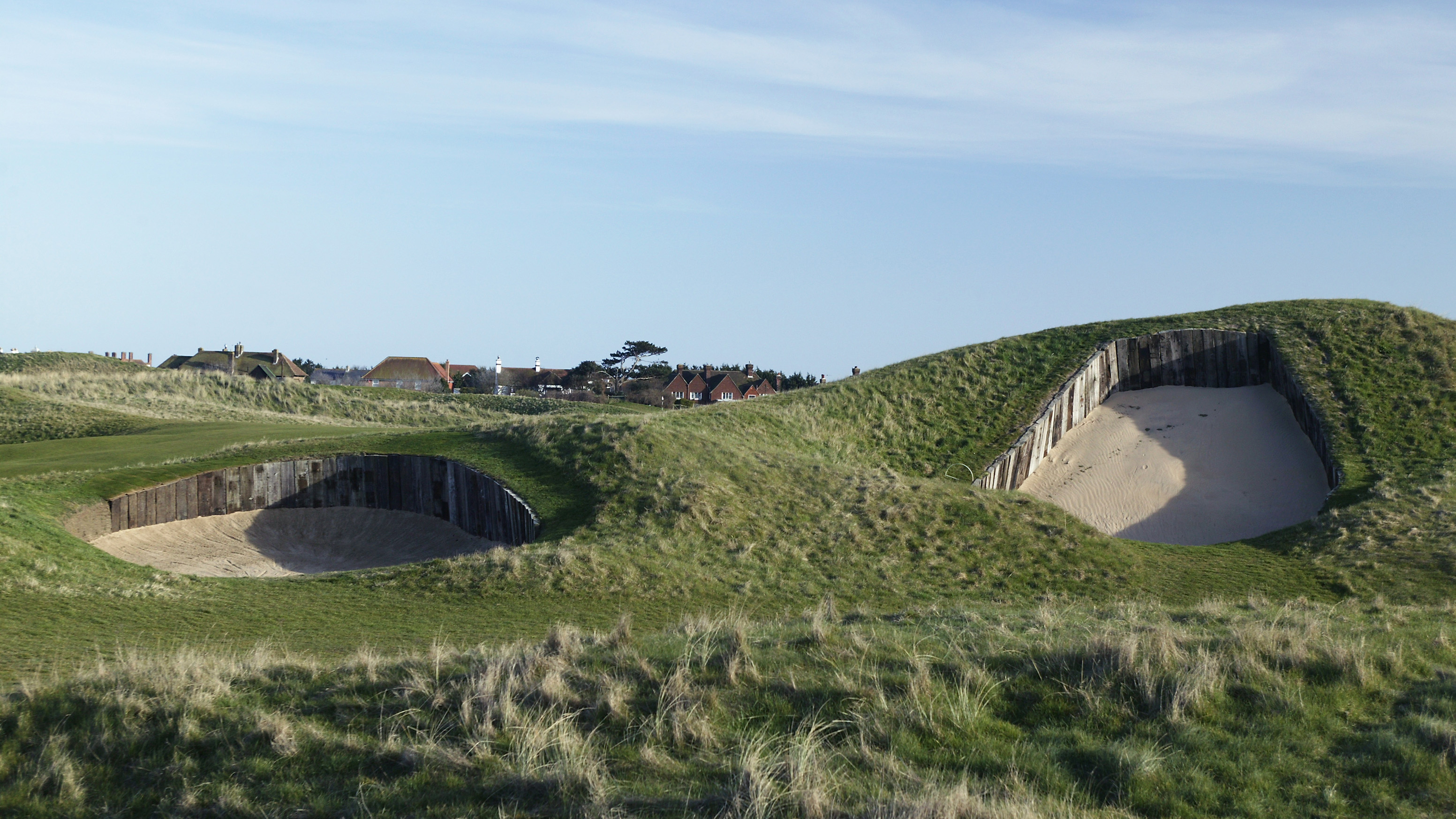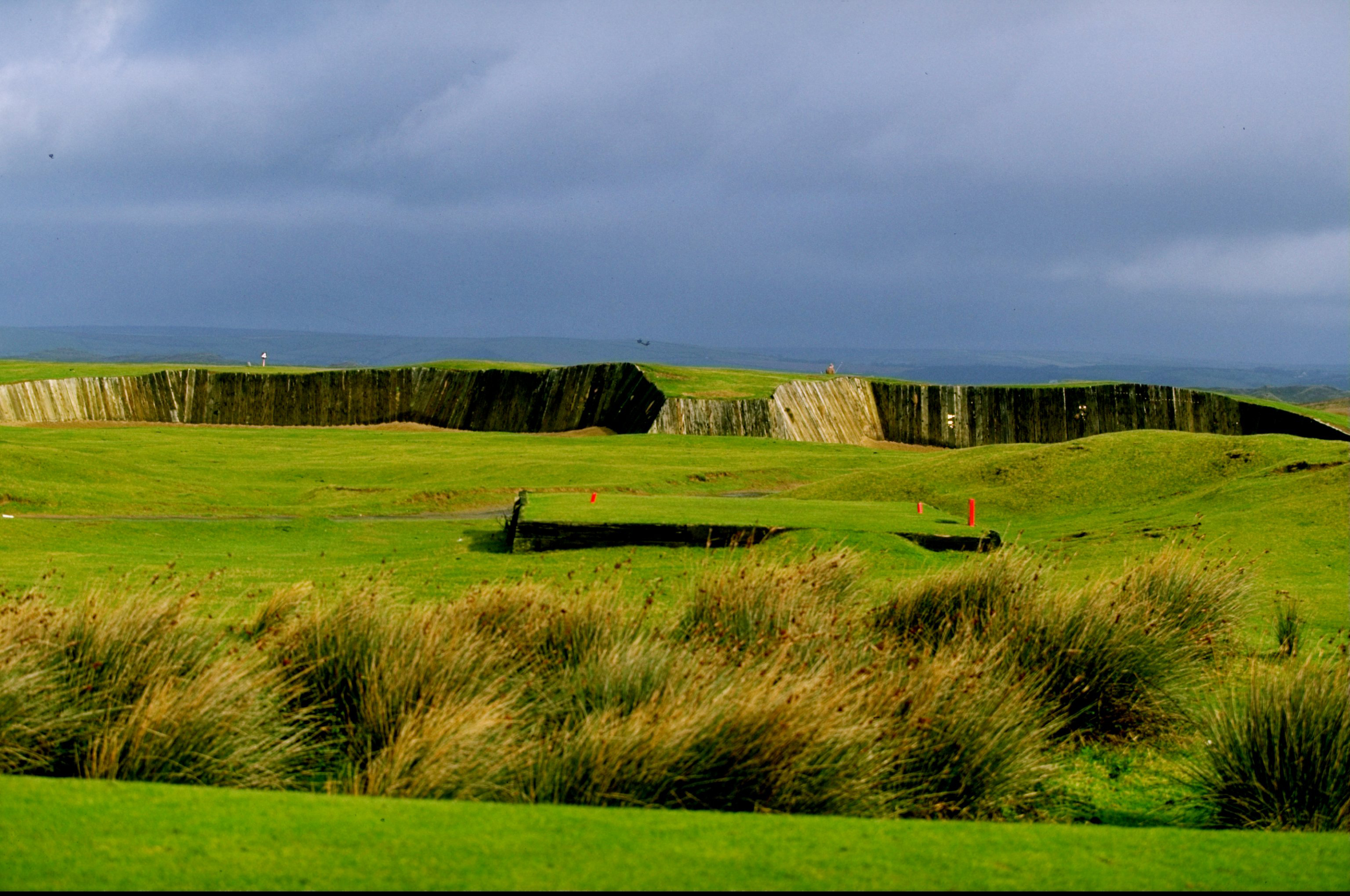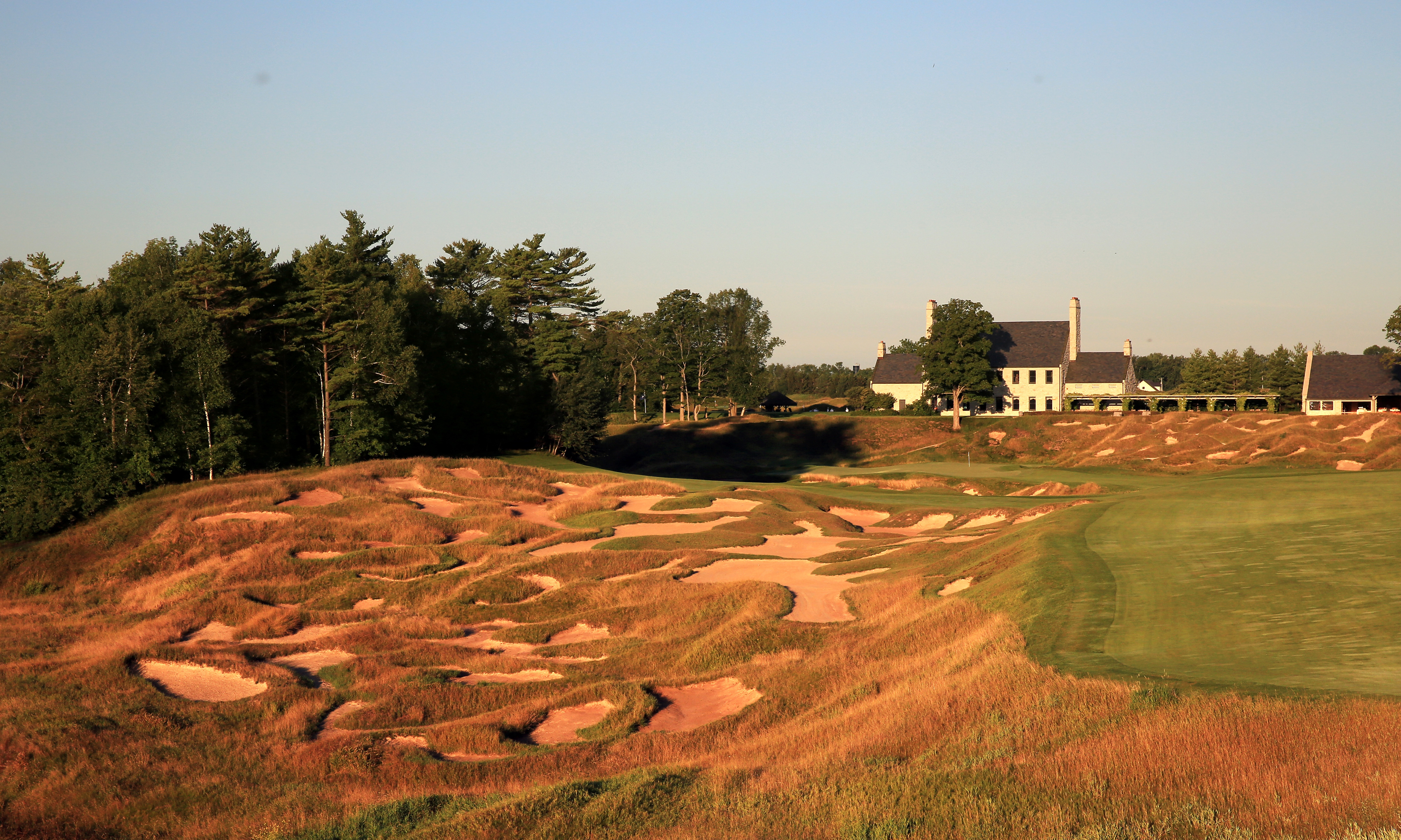7 Of Golf's Most Famous Bunkers
Bunkers can define a hole aesthetically, or through the threat they pose. Here, we consider some of the world’s most famous sand traps.


Whether for their striking aesthetics or devilish difficulty, bunkers are often the most talked about features on a golf course. Owing to its positioning, size or depth, a bunker can govern the characteristics of a hole and influence the golfer’s strategy. Here, we take a look at seven of the most recognisable sand traps in world golf.
We consider why these hazards stand out, and look at some of the famous moments they’ve witnessed over the years. From the classic, steep-faced bunkers of the British links to the innovative design showcased at more modern American tracks, bunkers are an integral part of golf that greatly add to the sport’s drama.
‘Hell’: 14th hole, the Old Course at St Andrews

Hell
The long 14th on the Old Course at St Andrews features one of the world’s most notorious golfing hazards: the sprawling ‘Hell’ bunker lies ominously in a hollow some 100 yards short of the putting surface. Not only does it cover an area of some 300 square yards, but it’s also almost seven feet deep with a steep revetted face. Hell must be avoided at all costs, as Jack Nicklaus can testify. The Golden Bear took four to get out in the ’95 Open en route to a ten. Gene Sarazen fell foul of the great trap in 1933; he stumbled to an eight and missed a play-off by a shot.
‘Himalaya’: 4th hole, Royal St George’s

Himalaya
The towering bunker that dominates the view from the 4th tee at Royal St George’s has been called ‘Himalaya’ and ‘Coffin’. It’s a hugely intimidating prospect – 40 feet deep and walled with wooden sleepers, set into a dune. For the average player, it’s a potential round wrecker. For the top players, when The Open visits, the bunker may seem incidental if the wind is helping, as it can be carried with ease. But, when the wind is hard against, the monster can come into the equation. In the 1993 Open at Sandwich, Mike Harwood of Australia found the top of the trap and had to scale the face to play his next shot.
‘Church Pews’: 3rd and 4th holes, Oakmont

The Church Pews
There were originally eight bunkers between the 3rd and 4th holes at Oakmont in Pennsylvania, but they were consolidated to one in the 1920s. Following an expansion by Tom Fazio in 2005, the bunker is now over 100 yards in length and ranges between 18 and 43 yards wide. Twelve three-foot-high turf islands traverse the trap, meaning that if your ball strays into the hazard, you are likely to face an extremely awkward shot. This is a bunker that the experienced players will not flirt with. In practice for the 2007 US Open, Tiger Woods refused to hit a shot from the Pews. He said he would simply be avoiding them, and that he didn’t “practise negatively.”
‘The Coffin’: 8th hole, Royal Troon

Coffin on the Postage Stamp 8th at Royal Troon
The Postage Stamp par-3 8th hole at Royal Troon looks innocuous enough on the card at just 123 yards. But in a crosswind, the slender, sloping green is tough to find and trouble lurks all around. Nowhere is worse to miss than in the narrow bunker to the left of the putting surface – ‘The Coffin’. Over the years this fearsome trap has caught out countless players. As it’s narrow with steep sides, it’s unlikely you’ll find a forgiving lie and simply getting it out to somewhere playable is a significant achievement. In the 2016 Open, Bubba Watson led at five-under through the first seven holes. But he found The Coffin on the 8th and walked off with a six.
‘Cape’: 4th hole, Royal North Devon

Cape at Royal North Devon
Although it’s only 200 yards to carry the sprawling, 80-yard-wide ‘Cape’ bunker, it’s a hugely daunting prospect. The sheer, sleepered face stares at you and you know that anything thin or mishit could leave you in a significant spot of bother. The sleepers are actually boards acquired from an old pier. They are 15 feet high and if you fail to make the carry, it’s often advisable to accept the punishment and play out backwards. The bunker evolved naturally and a painting in the clubhouse at Royal North Devon shows a hazard has been there since the mid-19th century.
Get the Golf Monthly Newsletter
Subscribe to the Golf Monthly newsletter to stay up to date with all the latest tour news, equipment news, reviews, head-to-heads and buyer’s guides from our team of experienced experts.
Whistling Straits: the Lot!

Whistling Straits
There are nearly 1,000 bunkers at Whistling Straits in Wisconsin – 967 according to Golf Digest. No course in world golf has more and it’s for the sheer scale and variety that the course makes this list. The 18th hole alone has a staggering 96 bunkers; many (perhaps even most) tracks in the UK have fewer on the entire course. On that bunker-strewn 18th, Dustin Johnson has been the most famous victim, in the USPGA of 2010. He played from what he believed to be a waste area but it was in fact a bunker. He grounded his club and was later given a two-stroke penalty. It meant he missed out on a play-off with Bubba Watson and the eventual winner, Martin Kaymer.
Bunker in the Green: 6th hole, Riviera Country Club

The wee bunker in the middle of the green on the 6th at Riviera
The 6th green at Riviera Country Club is one of the most unusual in world golf. It’s sloping and features significant elevation changes, but, most strikingly, it has a small pot bunker in its centre. Finding the trap is very frustrating, but it’s preferable to finding it between your ball and the flag. Many pros have played wedge shots from the putting surface over the years to try and get close to the cup. And many have found themselves using the flat-stick more times than they would have hoped in order to navigate around the trap. No hole on the PGA Tour sees more four-putts and, back in 2007, Ross Marcano found the green in one and walked off with a six!

Fergus is Golf Monthly's resident expert on the history of the game and has written extensively on that subject. He has also worked with Golf Monthly to produce a podcast series. Called 18 Majors: The Golf History Show it offers new and in-depth perspectives on some of the most important moments in golf's long history. You can find all the details about it here.
He is a golf obsessive and 1-handicapper. Growing up in the North East of Scotland, golf runs through his veins and his passion for the sport was bolstered during his time at St Andrews university studying history. He went on to earn a post graduate diploma from the London School of Journalism. Fergus has worked for Golf Monthly since 2004 and has written two books on the game; "Great Golf Debates" together with Jezz Ellwood of Golf Monthly and the history section of "The Ultimate Golf Book" together with Neil Tappin , also of Golf Monthly.
Fergus once shanked a ball from just over Granny Clark's Wynd on the 18th of the Old Course that struck the St Andrews Golf Club and rebounded into the Valley of Sin, from where he saved par. Who says there's no golfing god?
-
 'He Won't Stop Striving For Improvement' - Sports Psychologist Believes Rory McIlroy Has The 'Mindset, Focus And Drive' To Carry On Excellent Start To 2025 Season
'He Won't Stop Striving For Improvement' - Sports Psychologist Believes Rory McIlroy Has The 'Mindset, Focus And Drive' To Carry On Excellent Start To 2025 SeasonWe spoke to experienced Sports Psychologist, Gareth Shaw, about McIlroy's incredible Masters win and how the five-time Major can push on even further in 2025
By Matt Cradock
-
 I Think I've Found My New Favorite Club Of 2025 And It Might Surprise You
I Think I've Found My New Favorite Club Of 2025 And It Might Surprise YouPGA Pro and driver expert Joe Ferguson has been testing out the latest of TaylorMade’s ‘retro’ mini-driver offerings, the R7 Quad Mini, and it didn't disappoint…
By Joe Ferguson